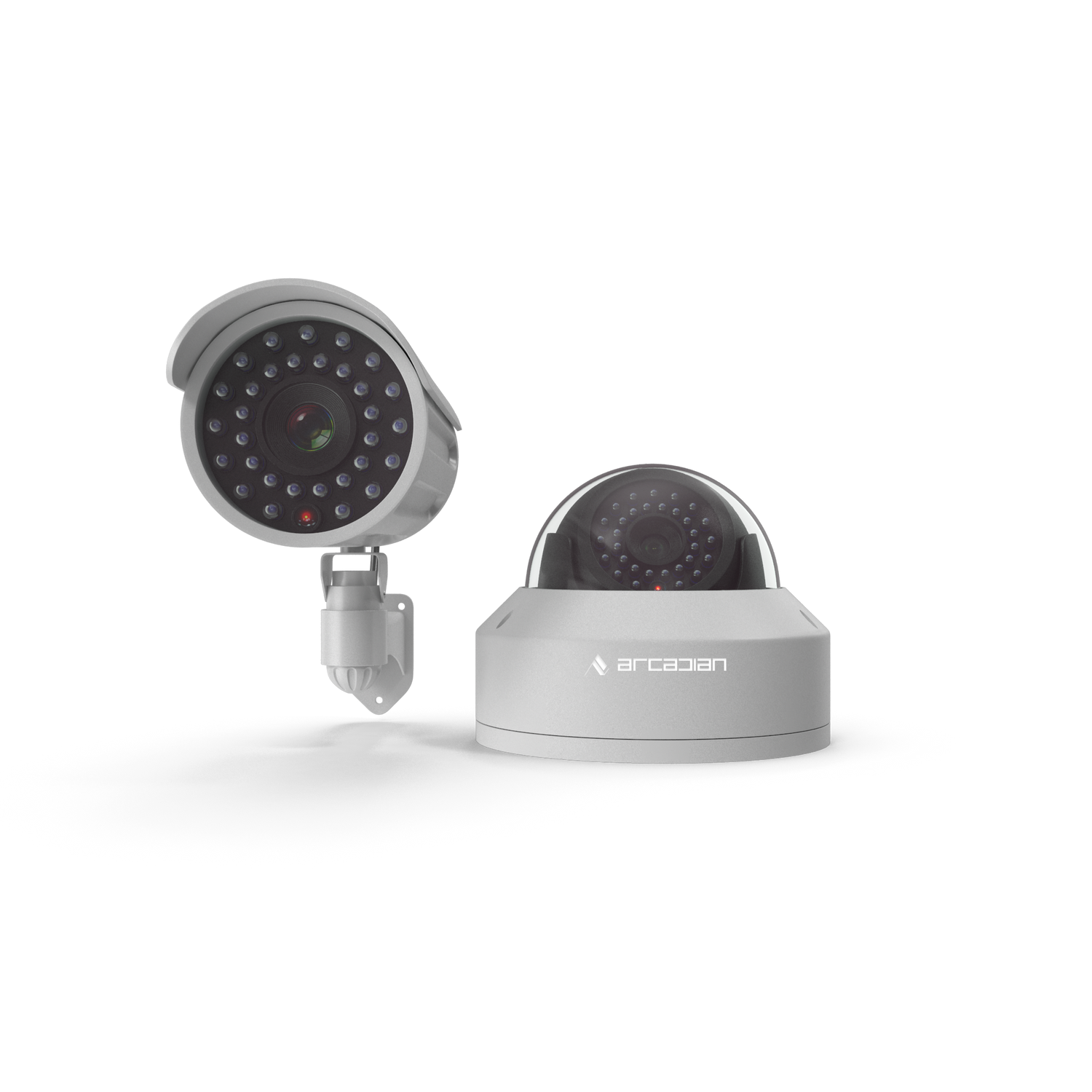Ancient Warriors: Genetec vs Milestone vs Avigilon vs ExacqVision
Introduction Video Management Systems (VMS) are the backbone of modern surveillance, yet the industry is at a critical turning point. Traditional VMS providers like Genetec and Milestone have long dominated the market with their reliable, on-premises solutions. However, as AI-driven analytics, cloud computing, and Video Surveillance as a Service (VSaaS)...

Introduction
Video Management Systems (VMS) are the backbone of modern surveillance, yet the industry is at a critical turning point. Traditional VMS providers like Genetec and Milestone have long dominated the market with their reliable, on-premises solutions. However, as AI-driven analytics, cloud computing, and Video Surveillance as a Service (VSaaS) gain momentum, legacy VMS providers face immense pressure to evolve or risk obsolescence.
This article provides a comprehensive analysis of the leading VMS providers, their current offerings, and the challenges they face in integrating AI and cloud-based solutions. Additionally, we will explore the risks of sticking with legacy VMS and highlight opportunities for innovation that can address industry pain points.
The State of the VMS Industry
Traditionally, VMS platforms were designed for local storage and on-premises security operations. While these systems offered reliability, they also introduced significant limitations in terms of scalability, remote accessibility, and advanced analytics.
Today, businesses demand:
✅ Real-time AI alerts for instant threat detection
✅ Cloud-based access for remote management
✅ Scalable solutions without expensive hardware investments
✅ Data security and privacy compliance
As a result, VMS providers are racing to integrate AI, cloud storage, and advanced analytics into their platforms. However, transitioning from legacy systems to cloud-based, AI-driven solutions presents both technical and commercial challenges.
Comparing Leading VMS Providers
Technical Capabilities of Major VMS Platforms
|
Provider |
AI & Analytics |
Cloud Integration / VSaaS |
Scalability |
|
Genetec Security Center |
Built-in AI analytics (KiwiVision) for object detection, loitering, ALPR (AutoVu); supports third-party AI plugins |
Hybrid support via Genetec Stratocast VSaaS, federates cloud cameras into on-prem system |
Highly scalable, but complex deployment for enterprise solutions |
|
Milestone XProtect |
Limited native AI; relies on third-party integrations (e.g., BriefCam) |
Emerging cloud adoption (Milestone Kite VSaaS) but primarily on-prem |
Scales well for SMB to enterprise with open architecture |
|
Avigilon (Motorola Solutions) |
Advanced built-in AI (Appearance Search, facial recognition, LPR) |
Dual approach: Avigilon Unity (on-prem) and Avigilon Alta (cloud-native) |
Best for homogenous deployments with Avigilon hardware |
|
ExacqVision (JCI/Tyco) |
Some AI via Tyco AI add-on; compatible with third-party AI |
Hybrid model: Exacq on-prem with Cloud Drive storage and Tyco Cloud |
Mid-tier scalability, limited for very large enterprise deployments |
Commercial & Operational Considerations
|
Provider |
Pricing Model |
Cybersecurity |
Customer Support |
|
Genetec |
High upfront costs; offers both perpetual and subscription models |
Strong focus on encryption, compliance, and secure device integration |
Requires certified integrators for setup and maintenance |
|
Milestone |
Flexible pricing (perpetual & subscription); SMB-focused options |
Secure design but relies on third-party components |
Large integrator network; strong online support community |
|
Avigilon |
Bundled software + hardware approach; higher per-camera cost |
Proprietary storage format; NDAA-compliant hardware |
Direct 24/7 support for certified partners and users |
|
ExacqVision |
Lower-cost licensing; add-ons for enterprise features |
Secure OS on appliances but legacy systems require updates |
Simple UI and reliable mid-market support |
Key Differences
-
Genetec: Best for high-security, large-scale deployments but complex and expensive.
-
Milestone: Highly flexible with strong third-party integrations but lacks native AI.
-
Avigilon: Advanced AI analytics but a closed ecosystem, requiring Avigilon hardware.
-
ExacqVision: Affordable and user-friendly but limited for enterprise scalability.
Challenges in Adopting AI, Cloud, and VSaaS
1. AI Integration Challenges
-
Cloud AI requires high bandwidth and introduces latency.
-
On-prem AI demands expensive GPU servers and infrastructure.
-
AI-enabled cameras add costs and limit flexibility.
2. Cloud & VSaaS Transition
-
Traditional VMS were built for local servers; moving to cloud requires re-architecture.
-
Cloud video storage incurs ongoing costs, making pricing models tricky.
-
Multi-tenant VSaaS platforms require strong cybersecurity and uptime guarantees.
3. Business Model Shift
-
VSaaS disrupts existing revenue streams for integrators who rely on hardware sales.
-
Subscription models change revenue recognition, requiring financial adaptation.
-
Pricing must balance affordability with the high cost of cloud storage and AI.
The Risks of Sticking with Legacy VMS
🔴 Cybersecurity Threats
-
Legacy VMS lack modern encryption and patching, leaving them vulnerable.
-
Older systems running outdated software are prime targets for cyberattacks.
⏳ AI & Analytics Gap
-
Businesses relying on manual video review miss security incidents and efficiency gains.
-
Competitors leveraging AI analytics gain an operational advantage.
🔗 Compatibility & Scalability Issues
-
Legacy systems struggle to integrate with new cameras and sensors.
-
Expansion is costly and inefficient compared to cloud-native solutions.
💰 Rising Maintenance Costs
-
Old hardware requires expensive repairs and replacements.
-
Compliance risks (e.g., GDPR, NDAA) may force costly upgrades.
Opportunities for Innovation
✅ Hybrid Cloud Architectures
-
Combining local storage with cloud-based management can optimize performance and cost.
-
Cloud-based AI processing metadata instead of raw video reduces bandwidth use.
🚀 Edge AI & On-Device Processing
-
AI chips in cameras or edge devices reduce reliance on cloud and servers.
-
Standardizing AI event metadata (ONVIF Profile M) allows better interoperability.
💲 AI-as-a-Service & Flexible Pricing
-
Pay-per-use AI analytics models can make advanced features accessible.
-
Tiered cloud services allow customers to scale as needed.
🔐 Cybersecurity & Privacy Enhancements
-
Zero-trust architecture and encrypted streaming improve security.
-
Automated privacy features (e.g., blurring faces) address compliance concerns.
🎛️ Unified Security Platforms
-
Integrating VMS with access control, IoT, and alarms enhances situational awareness.
-
AI-driven analytics can provide business intelligence beyond security.
Conclusion
The VMS industry is at a pivotal moment. Traditional on-prem solutions face mounting challenges from cloud and AI-powered alternatives. While legacy providers like Genetec and Milestone are adapting, emerging players are pushing a cloud-first agenda. The transition is complex, but the shift towards intelligent, scalable, and secure video management solutions is inevitable.
Businesses still relying on outdated VMS must evaluate the risks of inaction versus the benefits of modern solutions. The future belongs to AI-enhanced, cloud-connected VMS, and those who embrace innovation will gain a competitive advantage in security and operational efficiency.
👉 Ready to upgrade your video surveillance strategy? Contact Arcadian.ai today to explore cutting-edge AI and cloud solutions!

Security is like insurance—until you need it, you don’t think about it.
But when something goes wrong? Break-ins, theft, liability claims—suddenly, it’s all you think about.
ArcadianAI upgrades your security to the AI era—no new hardware, no sky-high costs, just smart protection that works.
→ Stop security incidents before they happen
→ Cut security costs without cutting corners
→ Run your business without the worry
Because the best security isn’t reactive—it’s proactive.







